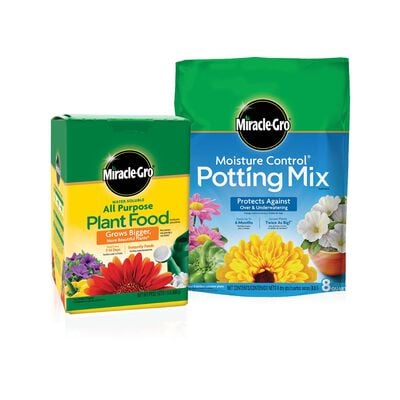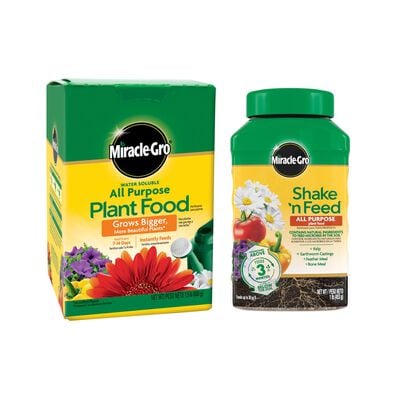
Raised Bed Garden Ideas
Build your plants a place they’ll love to call home and makes you happy, too.
Photo credit: iStock/mtreasuret
So, you decided a raised bed is the right type of garden for you this growing season. Yay! However, there is one more decision you need to make. Ease of planting aside, another bonus point when it comes to raised bed gardening is that you can build your own from materials found at a home improvement or farm supply store—or perhaps, your own house. There are a lot of raised bed garden ideas out there (thanks, Pinterest!), but most use wood, brick or stone, metal, concrete, or straw. To help you move more quickly from planning to planting, we've narrowed down the benefits of each, and included a few pointers for what you'll need to get the job done in a day or less.
- Brick or Natural Stone Raised Bed Garden
- Wooden Raised Bed Garden
- Metal Raised Bed Garden
- Concrete Raised Bed Garden
- Straw Bale Raised Bed Garden
No matter which style you choose, start by creating an outline of the bed on level ground, using a rope or garden hose. This will help you get a sense of scale before you begin assembling the bed. You might be dreaming about a classic 4x8-foot bed but then realize it takes up half your backyard. Any dimensions that allow you to reach the center of the raised bed will work, so play around until you find a size that suits you. Once you're happy with the size and location, remove the grass in that area to keep weeds from growing up through the soil. If you love your lawn too much for that, lay down cardboard or landscape fabric; it works like a bouncer at the club, letting pesky weeds know they're not invited to your plant party.
While you're envisioning your bountiful new garden, remember you'll need to fill the bed with soil once it's assembled—how much depends on what you want to plant. Use Miracle-Gro® Performance Organics® Raised Bed Mix, which is an ideal weight and texture, full of nutrients, and comes with a handy chart on the back of the bag to help you calculate just the right amount for your garden. A month after your plants are situated, sprinkle Miracle-Gro® Performance Organics® Raised Bed Plant Nutrition Granules onto the soil, following all label directions. This will increase your bounty organically, along with water, sunshine, and a lot of love.
But first, let's dig into these raised bed garden ideas.
Brick or Natural Stone Raised Bed Garden
Whether you're after that #cottagecore look you spotted on Instagram or you like to keep things looking more natural, brick or stone raised bed (like the one pictured above) will give you that aesthetic. You don't even need mortar: Dry-stacking means less work when constructing the bed and the option to take it apart should you want to move it next season. All you really need are solid brick pavers or flat-ish natural stone from any home improvement store. You can also salvage your own—just make sure they're in good shape and won't crumble under pressure (literally).
If you're assembling a dry-stacked raised bed out in your yard, you'll want to create a shallow trench the shape of your bed to help secure the foundational row. Use a straight-edged spade (or shovel) to dig between 1 to 2 inches deep. Then, no matter what type of surface you're building on, use the widest brick or stones for the first row if they're not uniform in size. Stagger the vertical joints for the second row, and so forth, until all 4 sides are around 1½ to 2 feet high. This is a great stopping point; any higher than 3 feet and they may topple over, hurting you or your plants.

Wooden Raised Bed Garden
Wood is one of the most common materials for a raised bed, perhaps because it's just so simple to put together. If you're planning to use the bed for multiple seasons, choose a rot-resistant type of wood, such as cedar, oak, or cypress. Otherwise, any untreated wood should hold up well for at least one successful growing season.
If you're not skilled with a circular saw (totally fair), most lumber yards will cut wood to the length you're after for free or a small fee. Then, you can quite simply nail or screw together each adjacent end to create a frame. Make sure all sides are at least 1 foot high, but if you plan to grow deep-rooted veggies, plan for 18 inches or more. For extra stability, go a step further and nail planks to wooden posts in each corner. Check out our guide to building a simple raised bed from wood for those step-by-step instructions. If you'd rather hit the super-easy button, look for the Miracle-Gro® Cedar Raised Garden Bed kit at Lowe's or Tru-Value, or order one online from Home Depot, Lowes, Walmart, or Amazon. You'll be done in a flash, but still feel proud that you assembled it yourself. Small wins count!

Photo credit: Shutterstock/Rose Makin
Metal Raised Bed Garden
For a long-lasting raised bed, try rust-resistant galvanized steel. One of the most popular looks for this lightweight material is a stock tank—you know, the kind that cows drink from on a dairy farm. You can buy one from most farm supply stores, but crafting your own from metal siding isn't too tough, either. The hardest part (and by hard, we mean taking on a task you've probably not done before) will be cutting the metal. The fastest way is to cut it with a circular saw using a metal-cutting blade (sparks will fly, so safety goggles and gloves are a must), but you can also use tin snips. These are scissors that cut through metal, it just takes a little more time—and wrist power—than using a saw.
For a DIY metal raised bed, use rebar or EMT conduit as stakes, and drive them into the ground with a mini sledgehammer following the outline of your raised bed. Then, lean each sheet of metal against each row of stakes to form the frame, and fill the bed with soil so that it forces the sheets against the stakes. You can also screw the sides together with metal corner guards for safety, but it's a good idea to keep a few stakes along the sides to stop the sheets from bowing. Remember to be careful of sharp edges, both now and when you're out there gardening.

Photo credit: Shutterstock/J. B. McCauley
Concrete Raised Bed Garden
Concrete blocks are one of the least expensive materials you can use for a raised bed garden (they start around $1 a block, on average). Keep in mind there's a difference between concrete and cinder blocks; the latter may contain heavy metals, so be careful if you use anything you found or you're not buying brand new concrete blocks from a home improvement store. To rest easy, simply line the bed with landscape fabric or a food-grade plastic liner to avoid any leaching, and plant ornamental flowers in the wells.
Use a wheelbarrow to move the blocks around (your back will thank you). They're heavy, but that means you won't need to dig a trench to secure them, and one row is enough to create a simple raised bed frame for growing annuals or herbs. However, if you have the muscles for it—or a friend who does—you can stack them up 2 to 3 rows high and cater to deeper-root plant needs. And if you're not sold on the plain gray surface, you can always get crafty and decorate the sides with mosaic tiles or colorful spray paint.

Straw Bale Raised Bed Garden
Put down the power tools and pick up some straw bales for one of the simplest ways to assemble a raised bed garden. Straw bales can be bought at most home improvement stores, or a farm supply store if you have one nearby. Don't pick up hay instead! Despite appearances, they aren't the same thing and seed-filled hay can bring several gardening problems with it.
Use the bales to form a square or rectangular frame with an open center—that's where the soil goes. You can make it neat and tidy by keeping them bound in the twine they come in, or cut that off for a loosey-goosey look. Either approach works, but sturdy bales offer a place to sit down while you tend the center of your garden or simply kick back to admire your plants. Once you've harvested your crops and the growing season comes to an end, you can scoop up the straw in a wheelbarrow and toss it in your compost. You'll have a blank canvas to start with next season or the space to build something permanent.
Once your raised bed is assembled, it's admiration time. Stand back, wipe that sweat off your brow, and give yourself a round of applause. You have a raised bed you love and it's ready for plants that will enjoy it, too. (Check out What to Plant in a Raised Bed if you need any tips.) Together, you're in for one stellar growing season.


